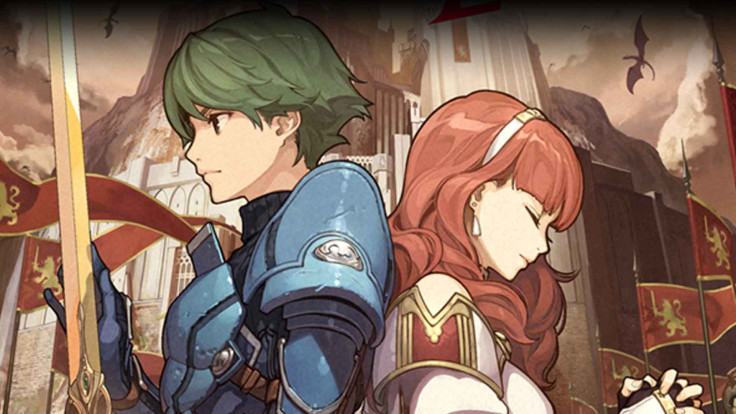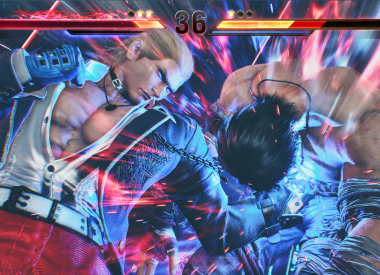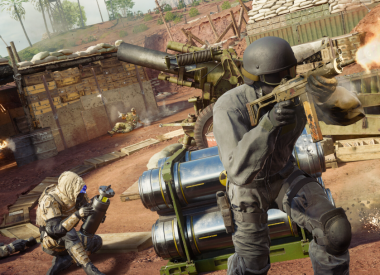Fire Emblem Echoes: Shadows of Valentia is a remake of Fire Emblem Gaiden, a 1992 Famicom title that never actually came to the States. With updated graphics, new battle systems and a whole new way to play Fire Emblem, this remake is a great way to honor the past while giving fans a little taste of what may come to the franchise in the years to come.
The story of Shadows of Valentia is engaging and there’s a lot of changes to battles that experienced Fire Emblem players may find odd, but the overall product is great and will make a welcome addition to any Fire Emblem fan’s 3DS library.
STORY
Without getting into spoiler territory, the story of Shadows of Valentia revolves around Alm and Celica, two inseparable friends who eventually find themselves in the middle of a war between two kingdoms.
Alm and Celica’s journey from being separated as children to crossing paths later in life is engrossing. While some parts of the story are easy to predict, there are enough twists and turns that kept me playing to find out what happens next.
I especially enjoyed Celica’s story. While it was predictable at times, it was great to see her grow as a character and warrior while also keeping her faith in her gods. It was also fun to see her recruit some of her band of misfits to her cause.
Alm’s story really hammers home the disconnect between societal classes and is a pretty straightforward journey. He’s fighting the war on the frontlines and it’s a decent story but the characters in his army aren’t as strong as Celica’s.
What makes Shadows of Valentia unique is how you control two different sides of the war at the same time. You’ll be controlling Alm and his army and Celica and her army during different parts of the game’s story. No matter how far apart they are, their actions directly affect the other, giving some real weight to what you do.
I also enjoyed how certain battles had lasting consequences depending on your performance. There are examples of when you needed to save a person from the clutches of the enemy, but you only have a certain amount of moves to do it.
If you fail to rescue someone, then the story changes and you can’t undo it unless you start a new save file. This gives players potential hours of post-game time if they want to see how the story plays out in different ways.
My one gripe with the story is how dialogue heavy it is in the first few hours of the game. While you can skip through the dialogue, if you want to get the gist of the conflict and learn more about each character, you will end up sitting there for long stretches listening to characters speak.
On more than one occasion, I was getting bored waiting for the next time I could actually play instead of watching cutscenes and listening to dialogue. This is balanced out better as you progress through the story but the beginning can be a drag.
BATTLE/GAME MECHANICS
Those familiar with the core mechanics of Fire Emblem battles will find a lot that is familiar in Shadows of Valentia but there are some differences that need to be noted.
As always, players move the units across different boards to take down the enemy’s army but the strategy changes from previous games like Awakening and Fates/Birthright . The weapon triangle is gone, making everything equal outside of archers getting a bonus against flying enemies.
The strategy of gathering a balanced army of sword, lance and axe wielders is sort of gone. What you need to rely on now are a balance of ranged and close combat fighters, while also collecting and forging stronger weapons. It’s an interesting decision to do away with the triangle in terms of a strategy standpoint (and something I didn’t see the need to remove) but it does make it a bit easier for newcomers to dive in and just fight.
Another change is in how units support each other. In the last two Fire Emblem games, units can gain support bonuses by fighting alongside certain units. These bonuses increase over time and can really help you overcome even the toughest enemies.
There’s a Fatigue system that players will also have to keep in mind. The more a character fights and moves around a map, the more tired they become. Fatigue can lower a fighter’s defenses and attacks, making it harder to defeat waves of enemies. There are food items that can replenish stamina but this feature puts an emphasis on finishing quickly and spreading out your units evenly on the battlefield.
While this feature takes some getting to, I found myself forgetting about it and it honestly didn’t affect my gameplay. It’s a new wrinkle that can increase the strategy of battle but it didn’t make a big enough effect for me.
In Shadows of Valentia , you can gain support conversations by fighting alongside specific characters, but they only act as a way to get more character development and to see where their relationships will take them. There is no practical application for the support conversations in battle and the units that can have these conversations are predetermined; you can’t mix and match. This isn’t a deal breaker by any sense, as this is how Nintendo wants to keep the story of Fire Emblem Gaiden as close to the original as possible, but those who had a good time matching up characters may be saddened that they can’t ship specific fighters. This also takes away some of the post-game fun.
As for the game’s difficulty, I played on Hard mode and on Casual (don’t judge me!) and it was a good challenge. I’ve played enough Fire Emblem to get through the harder difficulty and I definitely suggest experienced players to go straight to Hard mode, but there were some battles that I had to grind my teeth and sacrifice a few characters to defeat the enemy army.
DUNGEONS
Dungeons in Shadows of Valentia give a new way to play Fire Emblem that’s never been seen before in the series. You control Alm or Celica fully as you explore dungeons and forests, looking for treasure and a way out.
If you’re familiar with Tokyo Mirage Sessions #FE and how their dungeons work, this is exactly like that, with enemies scattered around each dungeon. You can avoid them or engage to grind out more experience for your army.
This is a nice little feature that can change up the pace of the story. You’ll be doing plenty of turn-based movements and battling in Shadows of Valentia, but to have these dungeons spread out helped break up the monotony.
It’ll be interesting to see if this is the direction Fire Emblem goes in once it comes to the Switch, and whether these dungeons will be a part of future games in the series.
VERDICT
Overall, Shadows of Valentia is an enjoyable Fire Emblem experience with great visuals and an engaging storyline. While there’s a lot of slogging through dialogue in the beginning, once you progress the story a bit, the balance of story and action is done well.
Mechanically, there are a lot of changes to battling and the overall experience of the game. Some work, like the dungeons, and some just don’t have enough of an effect to really change how fighting is done, like the Fatigue system.
The removal of the weapon triangle and the support boosts don’t seem necessary, but if this was to keep it as close to the original Fire Emblem Gaiden then I’m ok with it. I just hope future installments bring them back.
While the Nintendo Switch is getting a lot of attention, Fire Emblem Echoes: Shadows of Valentia is a great reminder that the 3DS can still deliver great games. This is the first must-own 3DS title of 2017.


















